Introduction
Generative AI, an exciting field at the intersection of artificial intelligence and creativity, is revolutionizing various industries by enabling machines to generate new and original content. From generating realistic images and music compositions to creating lifelike text and immersive virtual environments, generative AI is pushing the boundaries of what machines can achieve. In this blog, we will embark on a journey to explore the promising landscape of generative AI with VAEs, GANs and Transformers, delving into its applications, advancements, and the profound impact it holds for the future.
Learning Objectives
- Understand the fundamental concepts of generative AI, including Variational Autoencoders (VAEs), Generative Adversarial Networks (GANs), and Transformers.
- Explore the creative potential of generative AI models and their applications.
- Gain insights into the implementation of VAEs, GANs, and Transformers.
- Explore the future directions and advancements in generative AI.
This article was published as a part of the Data Science Blogathon.
Defining Generative AI
Generative AI, at its core, involves training models to learn from existing data and then generate new content that shares similar characteristics. It breaks away from traditional AI approaches that focus on recognizing patterns and making predictions based on existing information. Instead, generative AI aims to create something entirely new, expanding the realms of creativity and innovation.
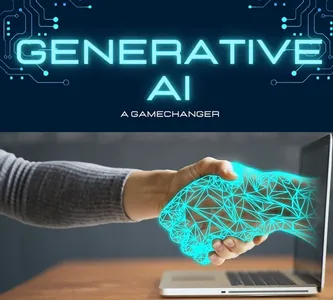
The Power of Generative AI
Generative AI has the power to unleash creativity and push the boundaries of what machines can accomplish. By understanding the underlying principles and models used in generative AI, such as Variational Autoencoders (VAEs), Generative Adversarial Networks (GANs), and Transformers, we can grasp the techniques and methods behind this creative technology.
The power of generative AI lies in its ability to unleash creativity and generate new content that imitates and even surpasses human creativity. By leveraging algorithms and models, generative AI can produce diverse outputs such as images, music, and text that inspire, innovate, and push the boundaries of artistic expression.
Generative AI models, such as Variational Autoencoders (VAEs), Generative Adversarial Networks (GANs), and Transformers, play a key role in unlocking this power. VAEs capture the underlying structure of data and can generate new samples by sampling from a learned latent space. GANs introduce a competitive framework between a generator and discriminator, leading to highly realistic outputs. Transformers excel at capturing long-range dependencies, making them well-suited for generating coherent and contextually relevant content.
Let’s explore this in detail.
Variational Autoencoders (VAEs)
One of the fundamental models used in generative AI is the Variational Autoencoder or VAE. By employing an encoder-decoder architecture, VAEs capture the essence of input data by compressing it into a lower-dimensional latent space. From this latent space, the decoder generates new samples that resemble the original data.
VAEs have found applications in image generation, text synthesis, and more, allowing machines to create novel content that captivates and inspires.
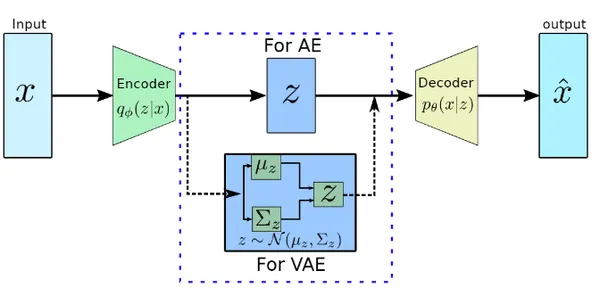
VAE Implementation
In this section, we will be implementing Variational Autoencoder (VAE) from scratch.
Defining Encoder and Decoder Model
The encoder takes the input data, passes it through a dense layer with a ReLU activation function, and outputs the mean and log variance of the latent space distribution.
The decoder network is a feed-forward neural network that takes the latent space representation as input, passes it through a dense layer with a ReLU activation function, and produces the decoder outputs by applying another dense layer with a sigmoid activation function.
import tensorflow as tf
from tensorflow import keras
from tensorflow.keras import layers # Define the encoder network
encoder_inputs = keras.Input(shape=(input_dim,))
x = layers.Dense(hidden_dim, activation="relu")(encoder_inputs)
z_mean = layers.Dense(latent_dim)(x)
z_log_var = layers.Dense(latent_dim)(x) # Define the decoder network
decoder_inputs = keras.Input(shape=(latent_dim,))
x = layers.Dense(hidden_dim, activation="relu")(decoder_inputs)
decoder_outputs = layers.Dense(output_dim, activation="sigmoid")(x)
Define Sampling Function
The sampling function takes the mean and log variance of a latent space as inputs and generates a random sample by adding noise scaled by the exponential of half the log variance to the mean.
# Define the sampling function for the latent space
def sampling(args): z_mean, z_log_var = args epsilon = tf.random.normal(shape=(batch_size, latent_dim)) return z_mean + tf.exp(0.5 * z_log_var) * epsilon z = layers.Lambda(sampling)([z_mean, z_log_var])
Define Loss Function
The VAE loss function has the reconstruction loss, which measures the similarity between the input and output, and the Kullback-Leibler (KL) loss, which regularizes the latent space by penalizing deviations from a prior distribution. These losses are combined and added to the VAE model allowing for end-to-end training that simultaneously optimizes both the reconstruction and regularization objectives.
vae = keras.Model(inputs=encoder_inputs, outputs=decoder_outputs) # Define the loss function
reconstruction_loss = keras.losses.binary_crossentropy(encoder_inputs, decoder_outputs)
reconstruction_loss *= input_dim kl_loss = 1 + z_log_var - tf.square(z_mean) - tf.exp(z_log_var)
kl_loss = tf.reduce_mean(kl_loss) * -0.5 vae_loss = reconstruction_loss + kl_loss
vae.add_loss(vae_loss)
Compile and Train the Model
The given code compiles and trains a Variational Autoencoder model using the Adam optimizer, where the model learns to minimize the combined reconstruction and KL loss to generate meaningful representations and reconstructions of the input data.
# Compile and train the VAE
vae.compile(optimizer="adam")
vae.fit(x_train, epochs=epochs, batch_size=batch_size)Generative Adversarial Networks (GANs)
Generative Adversarial Networks have gained significant attention in the field of generative AI. Comprising a generator and a discriminator, GANs engage in an adversarial training process. The generator aims to produce realistic samples, while the discriminator distinguishes between real and generated samples. Through this competitive interplay, GANs learn to generate increasingly convincing and lifelike content.
GANs have been employed in generating images, and videos, and even simulating human voices, offering a glimpse into the astonishing potential of generative AI.
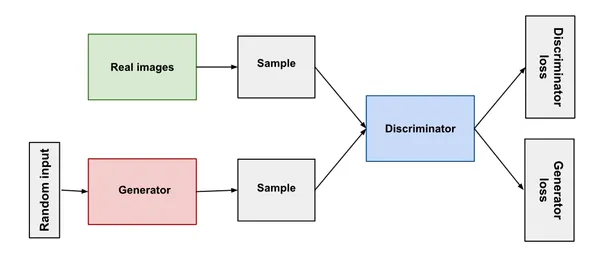
GAN Implementation
In this section, we will be implementing Generative Adversarial Networks (GANs) from scratch.
Defining Generator and Discriminator Network
This defines a generator network, represented by the ‘generator’ variable, which takes a latent space input and transforms it through a series of dense layers with ReLU activations to generate synthetic data samples.
Similarly, it also defines a discriminator network, represented by the ‘discriminator’ variable, which takes the generated data samples as input and passes them through dense layers with ReLU activations to predict a single output value indicating the probability of the input being real or fake.
import tensorflow as tf
from tensorflow import keras
from tensorflow.keras import layers # Define the generator network
generator = keras.Sequential([ layers.Dense(256, input_dim=latent_dim, activation="relu"), layers.Dense(512, activation="relu"), layers.Dense(output_dim, activation="sigmoid")
]) # Define the discriminator network
discriminator = keras.Sequential([ layers.Dense(512, input_dim=output_dim, activation="relu"), layers.Dense(256, activation="relu"), layers.Dense(1, activation="sigmoid")
])
Defining GAN Model
The GAN model is defined by combining the generator and discriminator networks. The discriminator is compiled separately with binary cross-entropy loss and the Adam optimizer. During GAN training, the discriminator is frozen to prevent its weights from being updated. The GAN model is then compiled with binary cross-entropy loss and the Adam optimizer.
# Define the GAN model
gan = keras.Sequential([generator, discriminator]) # Compile the discriminator
discriminator.compile(loss="binary_crossentropy", optimizer="adam") # Freeze the discriminator during GAN training
discriminator.trainable = False # Compile the GAN
gan.compile(loss="binary_crossentropy", optimizer="adam")
Training the GAN
In the training loop, the discriminator and generator are trained separately using batches of real and generated data, and the losses are printed for each epoch to monitor the training progress. The GAN model aims to train the generator to produce realistic data samples that can deceive the discriminator.
# Training loop
for epoch in range(epochs): # Generate random noise noise = tf.random.normal(shape=(batch_size, latent_dim)) # Generate fake samples and create a batch of real samples generated_data = generator(noise) real_data = x_train[np.random.choice(x_train.shape[0], batch_size, replace=False)] # Concatenate real and fake samples and create labels combined_data = tf.concat([real_data, generated_data], axis=0) labels = tf.concat([tf.ones((batch_size, 1)), tf.zeros((batch_size, 1))], axis=0) # Train the discriminator discriminator_loss = discriminator.train_on_batch(combined_data, labels) # Train the generator (via GAN model) gan_loss = gan.train_on_batch(noise, tf.ones((batch_size, 1))) # Print the losses print(f"Epoch: {epoch+1}, Disc Loss: {discriminator_loss}, GAN Loss: {gan_loss}")
Transformers and Autoregressive Models
These models have revolutionized natural language processing tasks. With the transformers self-attention mechanism, excel at capturing long-range dependencies in sequential data. This ability enables them to generate coherent and contextually relevant text, revolutionizing language generation tasks.
Autoregressive models, such as the GPT series, generate outputs sequentially, conditioning each step on previous outputs. These models have proved invaluable in generating captivating stories, engaging dialogues, and even assisting in writing.
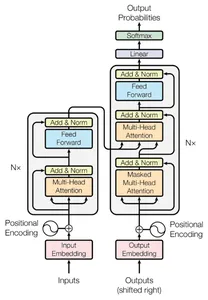
Transformer Implementation
This defines a Transformer model using the Keras Sequential API, which includes an embedding layer, a Transformer layer, and a dense layer with a softmax activation. This model is designed for tasks such as sequence-to-sequence language translation or natural language processing, where it can learn to process sequential data and generate output predictions.
import tensorflow as tf
from tensorflow import keras
from tensorflow.keras import layers # Define the Transformer model
transformer = keras.Sequential([ layers.Embedding(input_dim=vocab_size, output_dim=embedding_dim), layers.Transformer(num_layers, d_model, num_heads, dff, input_vocab_size=vocab_size, maximum_position_encoding=max_seq_length), layers.Dense(output_vocab_size, activation="softmax")
])
Real-world Application of Generative AI
Generative Artificial Intelligence has emerged as a game-changer, transforming various industries by enabling personalized experiences and unlocking new realms of creativity. Through techniques such as VAEs, GANs, and Transformers, generative AI has made significant strides in personalized recommendations, creative content generation, and data augmentation. In this blog, we will explore how these real-world applications are reshaping industries and revolutionizing user experiences.
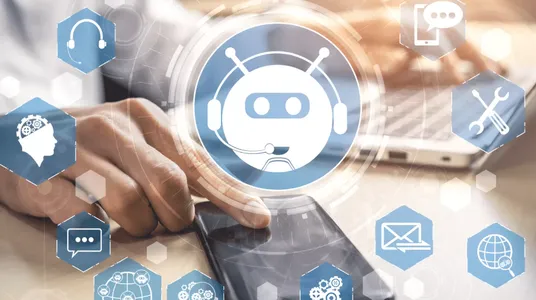
Personalized Recommendations
Generative AI techniques, such as VAEs, GANs, and Transformers, are revolutionizing recommendation systems by delivering highly tailored and personalized content. By analyzing user data, these models provide customized recommendations for products, services, and content, enhancing user experiences and engagement.
Creative Content Generation
Generative AI empowers artists, designers, and musicians to explore new realms of creativity. Models trained on vast datasets can generate stunning artwork, inspire designs, and even compose original music. This collaboration between human creativity and machine intelligence opens up new possibilities for innovation and expression.
Data Augmentation and Synthesis
Generative models play a crucial role in data augmentation by generating synthetic data samples to augment limited training datasets. This improves the generalization capability of ML models, enhancing their performance and robustness, from computer vision to NLP.
Personalized Advertising and Marketing
Generative AI transforms advertising and marketing by enabling personalized and targeted campaigns. By analyzing user behavior and preferences, AI models generate personalized advertisements and marketing content. It delivers tailored messages and offers to individual customers. This enhances user engagement and improves marketing effectiveness.
Challenges and Ethical Considerations
Generative AI brings forth possibilities, it is vital to address the challenges and ethical considerations that accompany these powerful technologies. As we delve into the world of recommendations, creative content generation, and data augmentation, we must ensure fairness, authenticity, and responsible use of generative AI.
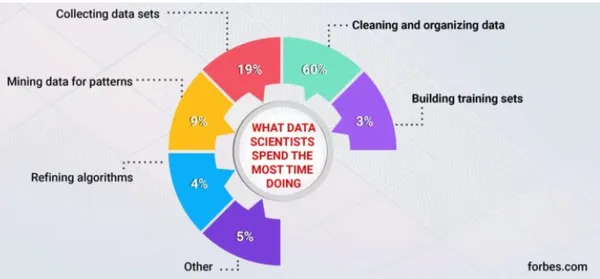
1. Biases and Fairness
Generative AI models can inherit biases present in training data, necessitating efforts to minimize and mitigate biases through data selection and algorithmic fairness measures.
2. Intellectual Property Rights
Clear guidelines and licensing frameworks are crucial to protect the rights of content creators and ensure respectful collaboration between generative AI and human creators.
3. Misuse of Generated Information
Robust safeguards, verification mechanisms, and education initiatives are needed to combat the potential misuse of generative AI for fake news, misinformation, or deepfakes.
4. Transparency and Explainability
Enhancing transparency and explainability in generative AI models can foster trust and accountability, enabling users and stakeholders to understand the decision-making processes.
By addressing these challenges and ethical considerations, we can harness the power of generative AI responsibly, promoting fairness, inclusivity, and ethical innovation for the benefit of society.
Future of Generative AI
The future of generative AI holds exciting possibilities and advancements. Here are a few key areas that could shape its development
Enhanced Controllability
Researchers are working on improving the controllability of generative AI models. This includes techniques that allow users to have more fine-grained control over the generated outputs, such as specifying desired attributes, styles, or levels of creativity. Controllability will empower users to shape the generated content according to their specific needs and preferences.
Interpretable and Explainable Outputs
Enhancing the interpretability of generative AI models is an active area of research. The ability to understand and explain why a model generates a particular output is crucial, especially in domains like healthcare and law where accountability and transparency are important. Techniques that provide insights into the decision-making process of generative AI models will enable better trust and adoption.
Few-Shot and Zero-Shot Learning
Currently, generative AI models often require large amounts of high-quality training data to produce desirable outputs. However, researchers are exploring techniques to enable models to learn from limited or even no training examples. Few-shot and zero-shot learning approaches will make generative AI more accessible and applicable to domains where acquiring large datasets is challenging.
Multimodal Generative Models
Multimodal generative models that combine different types of data, such as text, images, and audio, are gaining attention. These models can generate diverse and cohesive outputs across multiple modalities, enabling richer and more immersive content creation. Applications could include generating interactive stories, augmented reality experiences, and personalized multimedia content.
Real-Time and Interactive Generation
The ability to generate content in real-time and interactively opens up exciting opportunities. This includes generating personalized recommendations, virtual avatars, and dynamic content that responds to user input and preferences. Real-time generative AI has applications in gaming, virtual reality, and personalized user experiences.
As generative AI continues to advance, it is important to consider the ethical implications, responsible development, and fair use of these models. By addressing these concerns and fostering collaboration between human creativity and generative AI, we can unlock its full potential to drive innovation and positively impact various industries and domains.
Conclusion
Generative AI has emerged as a powerful tool for creative expression, revolutionizing various industries and pushing the boundaries of what machines can accomplish. With ongoing advancements and research, the future of generative AI holds tremendous promise. As we continue to explore this exciting landscape, it is essential to navigate the ethical considerations and ensure responsible and inclusive development.
Key Takeaways
- VAEs offer creative potential by mapping data to a lower-dimensional space and generating diverse content, making them invaluable for applications like artwork and image synthesis.
- GANs revolutionize AI-generated content through their competitive framework, producing highly realistic outputs such as deepfake videos and photorealistic artwork.
- Transformers excel in generating coherent outputs by capturing long-range dependencies, making them well-suited for tasks like machine translation, text generation, and image synthesis.
- The future of generative AI lies in improving controllability, interpretability, and efficiency through research advancements in multi-modal models, transfer learning, and training methods to enhance the quality and diversity of generated outputs.
Embracing generative AI opens up new possibilities for creativity, innovation, and personalized experiences, shaping the future of technology and human interaction.
Frequently Asked Questions
A1: Generative AI refers to the use of algorithms and models to generate new content, such as images, music, and text.
A2: VAEs consist of an encoder and a decoder. The encoder maps input data to a lower-dimensional latent space, capturing the essence of the data. The decoder reconstructs the original data from points in the latent space. It allows for the generation of new samples by sampling from this space.
A3: GANs consist of a generator and a discriminator. The generator generates new samples from random noise, aiming to fool the discriminator. The discriminator acts as a judge, distinguishing between real and fake samples. GANs are known for their ability to produce highly realistic outputs.
A4: Transformers excel in generating coherent outputs by capturing long-range dependencies in the data. They weigh the importance of different input elements. This makes them effective for tasks like machine translation, text generation, and image synthesis.
A5: Generative AI models can be fine-tuned and conditioned. But on specific input parameters or constraints to generate content that adheres to desired characteristics or styles. This allows for greater control over the generated outputs.
The media shown in this article is not owned by Analytics Vidhya and is used at the Author’s discretion.
Related
- SEO Powered Content & PR Distribution. Get Amplified Today.
- PlatoData.Network Vertical Generative Ai. Empower Yourself. Access Here.
- PlatoAiStream. Web3 Intelligence. Knowledge Amplified. Access Here.
- PlatoESG. Automotive / EVs, Carbon, CleanTech, Energy, Environment, Solar, Waste Management. Access Here.
- BlockOffsets. Modernizing Environmental Offset Ownership. Access Here.
- Source: https://www.analyticsvidhya.com/blog/2023/07/generative-ai-with-vaes-gans-transformers/



